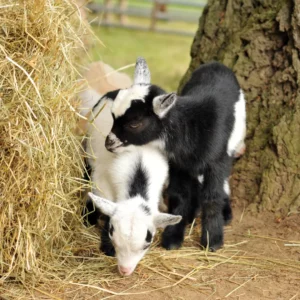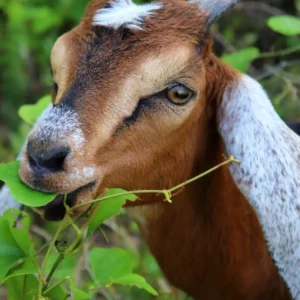Blog
Responsibly Breeding Goats: A Beginner's Guide
Responsibly breeding goats is a rewarding venture that can expand your homestead’s livestock or even turn into a profitable business. However, it’s a responsibility that requires careful consideration, planning, and a deep understanding of animal care. This guide will walk you through the basics of responsibly breeding goats, covering essential topics such as understanding goat breeds, preparing for breeding, managing pregnancy, kidding, and postpartum care.
Understanding Goat Breeds and Purposes
Before diving into breeding, identify your goals. Are you breeding goats for milk, meat, fiber, or as pets? Different breeds excel in different areas:
Dairy breeds such as Nubians and Saanens are prized for their milk production.
Meat breeds like Boer goats are known for their fast growth and meat yield.
Fiber breeds such as Angoras produce valuable mohair.
Selecting the right breed to meet your objectives is the first step toward successful and responsible goat breeding.
Preparing for Responsibly Breeding Goats
Health Check: Ensure both the doe (female goat) and buck (male goat) are healthy before breeding. This includes vaccinations, deworming, and a general health assessment by a veterinarian.
Nutrition: Proper nutrition is crucial, especially for does, as it affects their ability to conceive and maintain a healthy pregnancy. A balanced diet rich in essential nutrients, vitamins, and minerals is vital. Use our Goat Nutrition Calculator to get your goats started off on the right hoof!
Housing: Prepare a clean, safe, and comfortable environment for breeding and eventual kidding. Adequate shelter protects goats from harsh weather and predators.
Timing: Most goats are seasonal breeders, with the breeding season typically in the fall for spring kidding. Understanding the estrus cycle of your does will help you plan the breeding at the right time.
Breeding Process
Responsibly breeding goats is a delicate process: introduce the doe to the buck during her estrus cycle, which lasts about 1-3 days every 18-21 days. Observing the doe for signs of heat, such as restlessness, vocalization, and tail wagging, can help you time the breeding more accurately. Some breeders prefer hand mating, where the doe and buck are put together only during estrus, while others may opt for pen mating, where they are housed together for a longer period.
Pregnancy and Kidding
Pregnancy: Goat gestation lasts approximately 150 days. Monitor the doe’s health and nutrition closely throughout her pregnancy, gradually increasing her feed as she nears kidding.
Kidding Preparation: As the kidding date approaches, prepare a clean, warm, and quiet kidding area. Have supplies on hand such as towels, iodine for umbilical cord care, and a thermometer.
Kidding: Most does can kid without human intervention. However, it’s crucial to monitor the process for any complications, such as dystocia (difficult birth). Knowing when to call a veterinarian is essential for the health of both the doe and kids.
Postpartum Care
Doe Care: After kidding, ensure the doe is healthy, eating well, and producing enough milk for her kids. Watch for signs of postpartum complications, such as retained placenta or mastitis.
Kid Care: Kids should stand and nurse within the first few hours of birth. Administer colostrum immediately if they cannot nurse. Vaccinations and disbudding (if desired) should occur within the first few weeks of life.
Record Keeping
Maintaining detailed records is crucial for managing the health and productivity of your herd. Keep track of breeding dates, health checks, kidding outcomes, and any medical treatments.
Ethical Considerations
Responsibly breeding goats goes beyond the basics of care. Consider the long-term welfare of the goats you bring into the world. Ensure there’s a market or plan for the kids you produce, practice humane treatment, and avoid overbreeding.
Conclusion
Responsibly breeding goats demands commitment, knowledge, and a genuine care for the animals’ well-being. By preparing adequately, making informed decisions, and continuously learning, you can ensure a rewarding and ethical breeding experience. Whether you’re aiming to produce milk, meat, fiber, or simply expand your goat family, responsible practices are the foundation of success in goat breeding.



